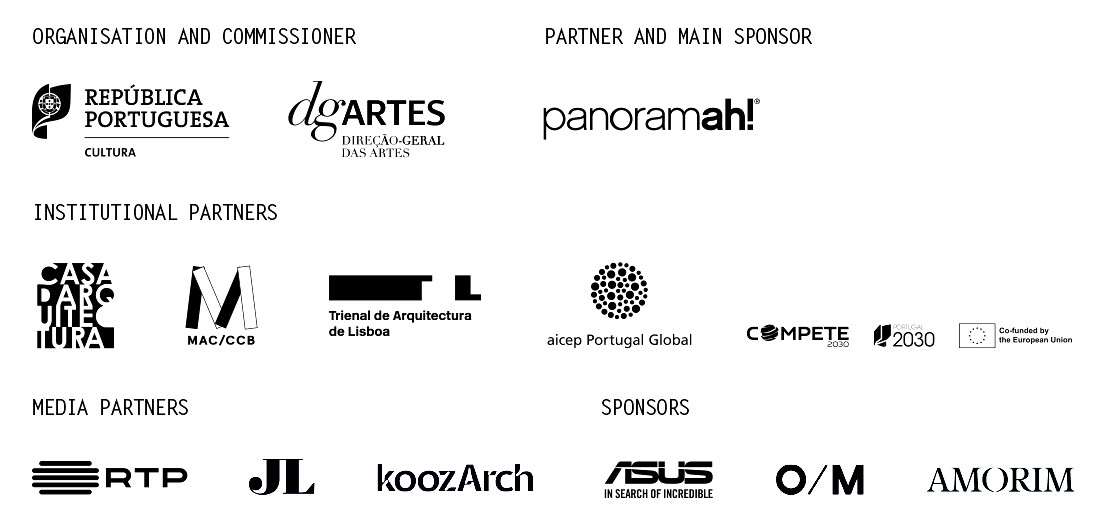May 10–November 23, 2025
Fondaco Marcello
Calle del Traghetto o Ca' Garzoni San Marco 3415
30124 Venice
Italy
When did we begin to abandon the paradise we have on Earth? Perhaps from the moment we imagined it elsewhere—distant, unattainable. For centuries, nature was our adversary, something to be tamed or feared. We sought divine protection, then technological control. Yet, as environmental crises intensify, our illusion of mastery crumbles. The consequences are undeniable, shaped not only by necessity, but by greed.
Portugal embodies these tensions. It is a country celebrated for its landscapes, attracting tourists, investors, and digital nomads. Yet, it faces urgent social and environmental challenges: economic inequality, rural depopulation, housing crises, and extreme climate conditions. Over 80% of the population lives along the coast, while the interior suffers from neglect, abandoned farmlands, and unchecked forest fires. Only 2% of Portugal’s forests are state-owned, making sustainable land management nearly impossible. Droughts, coastal erosion, and extractive industries threaten both natural resources and ways of life. Meanwhile, globalization underscores our interconnectedness, and yet paradoxically divides us—eroding trust in collective solutions.
Faced with these contradictions, Paraíso, hoje. questions architecture’s role in shaping our world. What is the role of the architect? Confronted with overwhelming uncertainty, the curators initially considered presenting an empty pavilion—silent resistance against the accelerating forces that define contemporary life. But architecture’s holistic lens, encompassing materials, energy, water management, and urban systems, remains crucial in addressing today’s crises.
Rethinking paradise
For too long, paradise has been conceived as a lost past (Eden) or a distant future (reward after death). What if, instead, we reclaim it in the present? With more questions than answers, Paraíso, hoje. proposes optimism as an architectural stance—recognizing the urgency of action while refusing fatalism. To envision paradise today is to dignify our fleeting presence on Earth, acknowledging that while change is inevitable, transformation requires knowledge, effort, and intention.
The curators challenge the notion that paradise is lost or unattainable. They argue that despite the crisis we face, we live in a time of unparalleled advancements and opportunities. However, acknowledging privilege must go hand in hand with confronting the inequalities and environmental degradation that define our era.
Portugal, often romanticized as a “garden by the sea” is at a crossroads. The coastline, under immense pressure from tourism, real estate speculation, and urban sprawl, contrasts sharply with the neglected interior, marked by industrial exploitation and depopulation. Architecture, knowingly or not, has played a role in these processes—at times complicit, at others striving toward more sustainable futures. Paraíso, hoje. insists that architecture must take responsibility, not only as a discipline of design but as a force for social and ecological awareness.
Paraíso, hoje.
Paraíso, hoje. unfolds through two key elements: an interactive installation and an Atlas, offering a critical yet hopeful reflection on Portugal’s contemporary territory.
The installation offers a hybrid physical and digital environment, an immersive experience that merges architecture, technology, and art and that is activated by the visitor’s presence. Through sound and image—fed by an archive of recent film material shot across Portugal—, it highlights the interdependence between landscape and human action, encouraging introspection on the fragile balance between cultural and natural environments.
As a participatory, collective archive of images, the Atlas critically examines architecture’s role across various scales and contexts. Organized around themes like regeneration, networks, leisure, and simulacrum, it interrogates how we construct, inhabit, and perceive our surroundings. The Atlas includes selected projects as well as proposals in response to an open call, Where is Paradise?, inviting the public to submit images of spaces, projects, or landscapes that contribute to a reimagined vision of Portugal’s built environment. The Atlas is part of the companion book published by Circo de Ideias with contributions by António Guerreiro, Maria Manuel Oliveira, Nuno da Luz, and by the curatorial team Paula Melâneo, Pedro Bandeira, Luca Martinucci, Catarina Raposo, Nuno Cera, and features excerpts from interviews with the landscape architects Aurora Carapinha, João Gomes da Silva (Global), João Nunes (PROAP), and Luís Paulo Ribeiro (Topiaris).
Beyond the pavilion
Alongside the exhibition in Venice, Paraíso, hoje. extends its reach through a series of conversations and the launch of the publication. These discussions will take place at the Portuguese Pavilion, the Lisbon Architecture Triennale, and online, fostering continued engagement beyond the Biennale. By reconsidering paradise as an active, collective, and present condition, the Portuguese Pavilion challenges us to resist nostalgia and inaction. Instead, it calls for an architecture of agency—one that reclaims responsibility for the world we shape, inhabit, and leave behind.
Paraíso, hoje. is a curatorial research project by architects Paula Melâneo, Pedro Bandeira, and Luca Martinucci, together with landscape architect Catarina Raposo and video artist Nuno Cera; commissioned by Directorate-General for the Arts (DGARTES); and organized by Ministry of Culture of Portugal.
For more about Paraíso, hoje., future iterations and conversations, visit us at paraisohoje.pt , or contact us at hello [at] paraisohoje.pt. For press inquiries and to rsvp for the press conference and round table, contact us at press [at] paraisohoje.pt.
